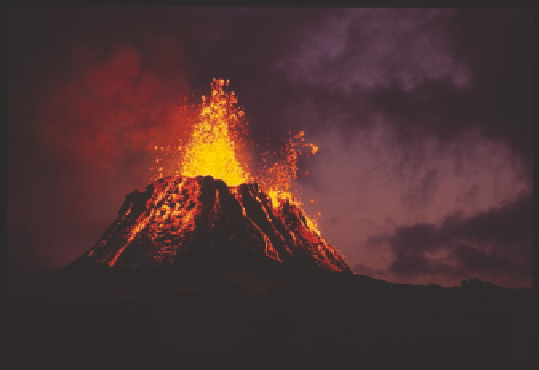Geoscience Reference
In-Depth Information
Types of Faults
To review the various kinds of faults, go to the
Geo Media Library
and access the animation
Types of Faults
. This animation contains
a video presentation that illustrates the fault types discussed in this
chapter and will demonstrate the various ways that faults move and
the stresses that cause this movement. As you watch the media, try
to relate the various fault movements to the character of the land-
scape. After you have completed the exercise, be sure to answer
the questions at the end to test your understanding of fault types.
and loss of human life. As a result, geologists are work-
ing to improve earthquake prediction.
KEY CONCEPTS TO REMEMBER ABOUT
FAULTS ANd EARTHqUAKES
7.
Devastating tsunamis can result when earthquakes occur
in the world's oceans. The Indonesian tsunami in 2004
and the Japanese tsunami in 2011 reflect the tremendous
damage that can result from these events. Evidence indi-
cates that tsunami warning systems save lives.
1.
There are four major kinds of faults: normal, reverse,
overthrust, and strike-slip faults.
2.
Earthquakes occur when moving plates are stuck along
fault planes, causing stress to increase until a rupture
occurs along the fault.
Volcanoes
3.
The place within Earth where a fault breaks is called the
focus. The location on the surface directly above the
focus is called the epicenter.
After investigating the processes and geography of earthquakes,
it is time to discuss volcanoes, which are the other major fea-
ture associated with plate tectonics. As briefly discussed in
Chapter 12, a
volcano
is a mountain or large hill containing a
conduit that extends down into the upper mantle, through which
magma, ash, and gases are periodically ejected onto the surface
of Earth or into the atmosphere (Figure 13.33). In most cases,
4.
Earthquakes are measured with a seismograph, which
measures the intensity of P and S waves that radiate
outward from the earthquake focus.
5.
The strength of earthquakes is measured on the
logarithmic Richter scale, which indicates the mag-
nitude of seismic waves passing through the Earth's
crust.
Volcano
A mountain or large hill containing a conduit that
extends down into the upper mantle, through which magma,
ash, and gases are periodically ejected onto the surface of
Earth or into the atmosphere.
6.
Earthquakes are perhaps the most intense natural haz-
ard on Earth, often resulting in catastrophic damage
(a)
(b)
Figure 13.33 Volcano eruptions.
(a) Ash and steam cloud from Augustine Volcano in Alaska. (b) Magma eruption at the Pu'u 'O'o
Volcano in Hawaii.

























